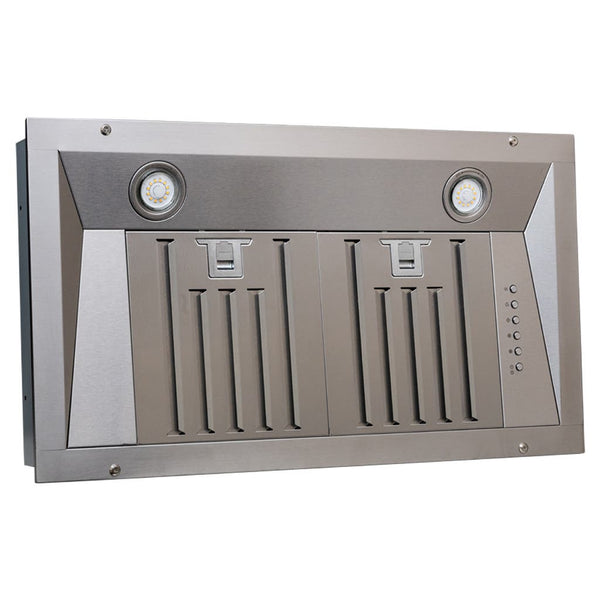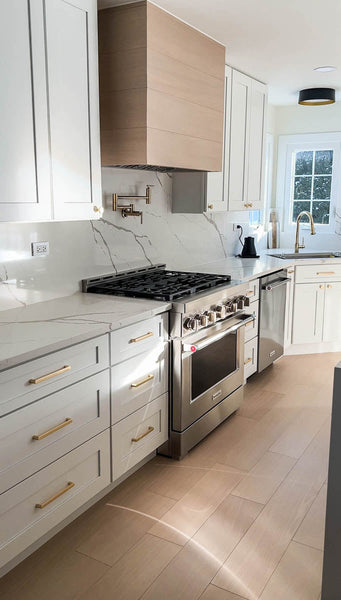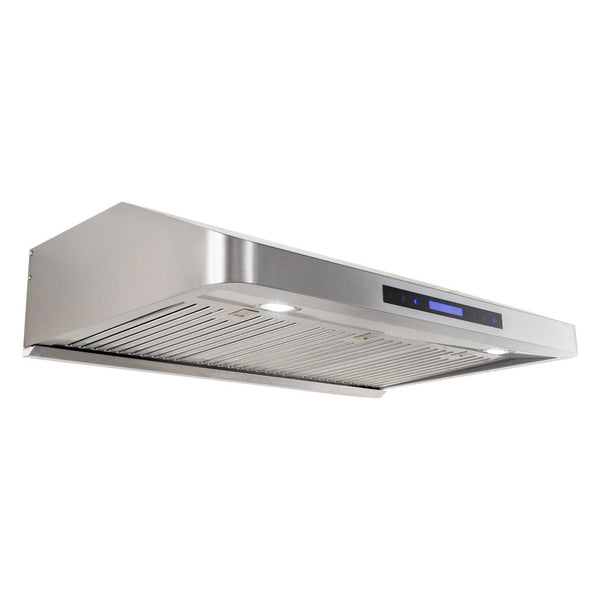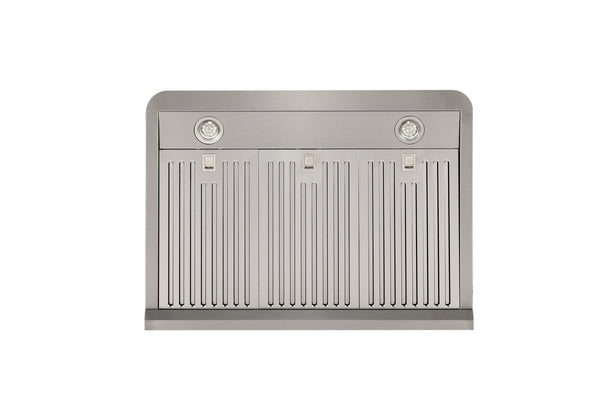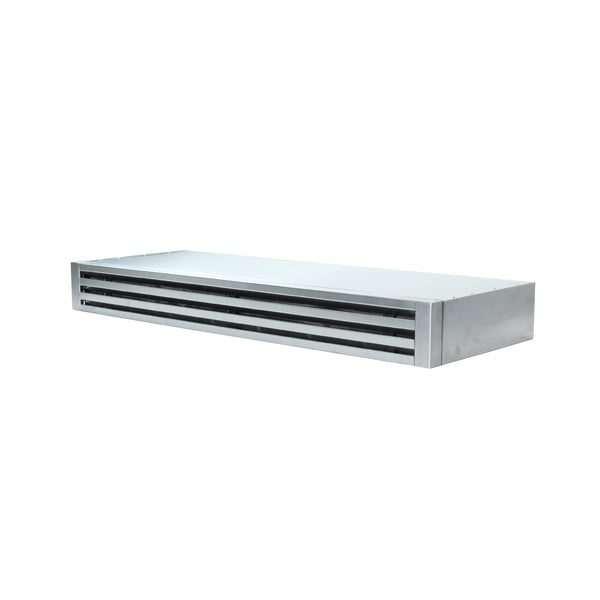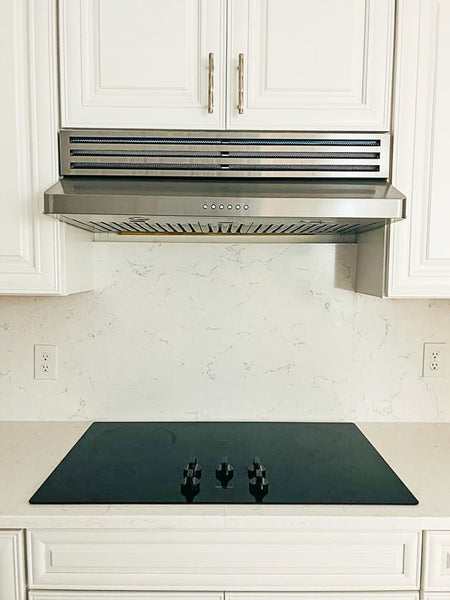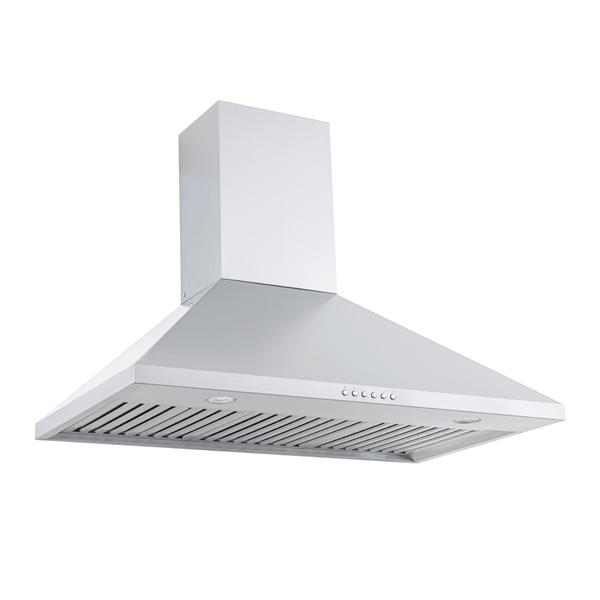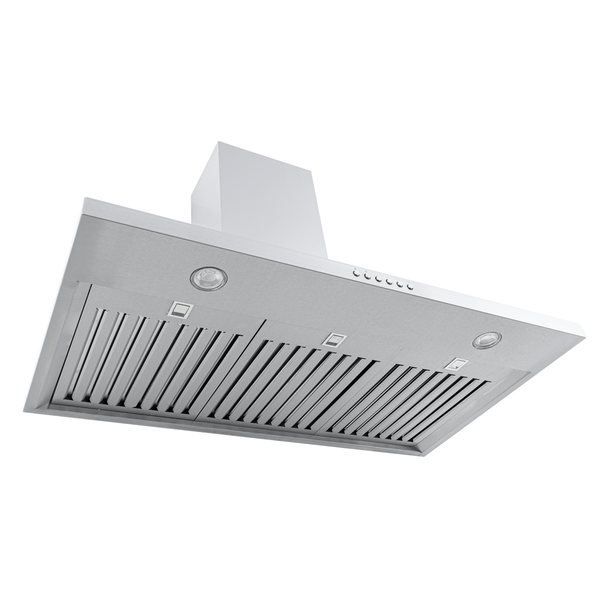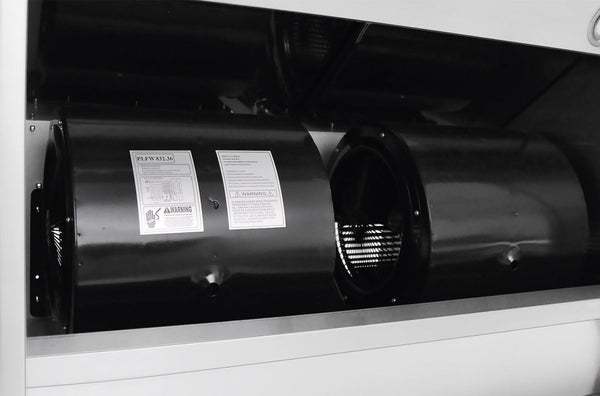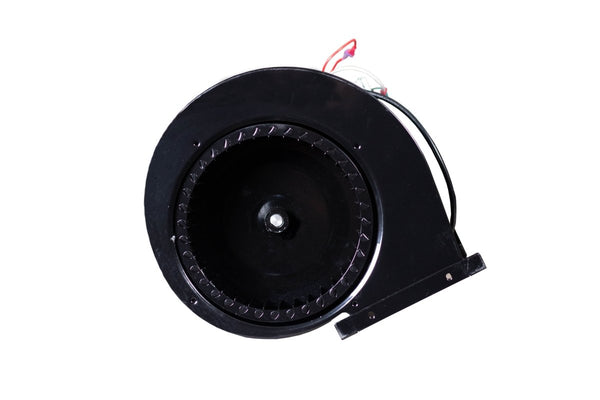Table of Contents
Your CFM needs depend on:
- Cooktop type: Electric vs. gas
- Cooking frequency: Daily vs. occasional
- Food types: High-heat, greasy, or aromatic foods
- Kitchen size: Small spaces need higher CFM
Cost Consideration: High CFM (1200-2000) also removes your heated/cooled air, increasing energy costs.
Your Ideal CFM for Range Hoods Over Electric Cooktops
- No gas fumes to vent
- Lower CFM requirements
- Quieter operation
- Direct heat transfer to cookware
Why electric needs less CFM: Electric cooktops heat elements that transfer heat directly to pans. No gas combustion means no additional exhaust fumes mixing with air.
Gas vs. Electric difference: Gas cooktops burn natural gas or propane, creating exhaust and heated air that rises quickly and must be removed along with cooking odors.

Your Ideal CFM for Range Hoods Over Gas Cooktops
100 CFM for every 10,000 BTUs
What are BTUs? British Thermal Units measure the heat energy each burner produces at maximum output. Gas cooktops burn natural gas or propane, creating heat that must be vented.
- 48" cooktop with 6 burners + griddle
- Small burners: 8,000 BTUs × 3 = 24,000 BTUs
- Large burners: 12,000 BTUs × 3 = 36,000 BTUs
- Griddle: 20,000 BTUs
- Total: 80,000 BTUs ÷ 10,000 × 100 = 800 CFM minimum
Adjust CFM based on your cooking:
- Higher CFM needed: Greasy foods, island cooktops, frequent cooking
- Lower CFM acceptable: Light cooking, infrequent use
Our Final Tips
When you need MORE CFM:
- Strong-odor foods: Fish, garlic, spicy dishes
- High-heat cooking: Searing steaks, stir-frying
- Frequent cooking: Daily meal preparation
- Professional cooking style: Multiple burners simultaneously
Benefits of proper CFM: Cleaner kitchen, better air quality, removes toxins and grease effectively.
